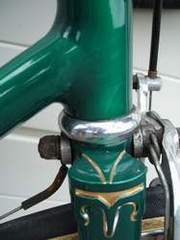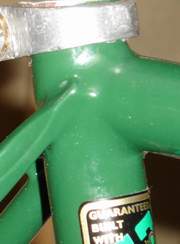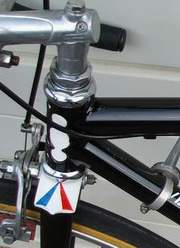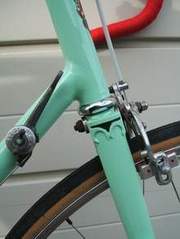Welded lugless frames
Posted: Friday 26th June 2020
Welded frames fall into two basic categories. Sif bronze fillet brazed or electronic flash pressure weld. I never did like the term welded and much prefer the term “Lugless”. Welded and lugless frame were very popular with the French makers, especially on the pre-war Tour de France machines. Over here Raleigh made a welded frame back in 1924 which was of lugless construction and was acetylene welded. This bicycle was first exhibited at the 1924 Cycle Show and marked Raleigh’s return to the lightweight market. They had pulled out of this market during the Great War.

A long time ago I met Harry Rensch and he told me he was the first to produce welded frames here in the UK. This was in 1935 after he had visited a cycle show in Paris where he had seen welded frames for the first time. He also told me this is where he got the design idea for the Rensch fork crown, sure he said it was copied from the aluminium Barra but it might have been the Schultz. This conversation was after all a very long time ago. Anyway Harry was the first here, Claud Butler at least two or three years after with his Massed Start frame. Harry also beat Claud on welded brazed frames or to use Butler’s terminology “Bi-laminated”. Rensch were making these in 1938 and I am positive that Claud’s bilaminated never came on the scene until after the war. Avant Coureur or Allrounder was his first model.
Now back to true welded lugless frames. Royal Enfield Unitize with their Bullet models and the Dayton Amalgam models were produced by the American flash pressure weld system as a by-product of their war effort production. Both these large factories had been engaged on war work and had the welding equipment installed during this period. So when peacetime returned and export and die was the British industry byword they utilized this welding process to the full. Basically the tubes are carefully mitred, normally on a lathe and not by hand. They are then placed in the machine jig. A high electric current is then passed through the frame tubes at the touch of a button; this causes the tubes to melt at the joint due to the resistance there. As the tubes melt and arc, pressure is applied to the joint. The process is very quick and the resultant joint requires no further cleaning or finishing. Frame production is very quick and consequently cheap compared to normal
conventional bicycle frame making (brazing).
Posted: Friday 26th June 2020
This article appears in the following categories.
Upcoming Events
Whether you are looking for a gentle social meet up, or a 100-mile ride browse the community’s upcoming events and plan your next weekend outing.




